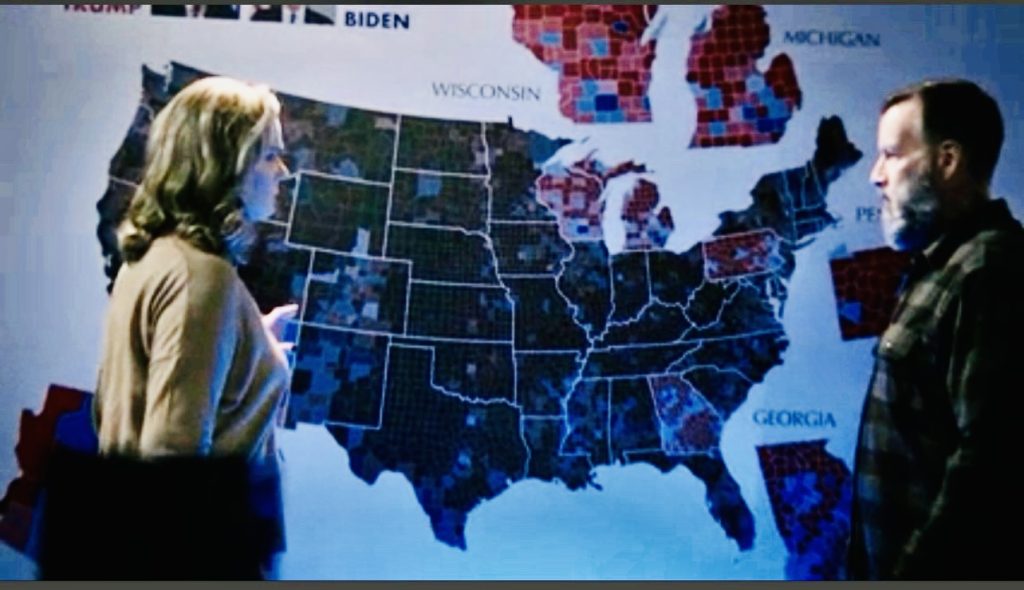2000 Mules, a 90-minute documentary produced by Dinesh D'Souza, is the visual tip of the ballot trafficking iceberg based on the digital evidence collected by True the Vote (TTV) and OPSEC. Utilizing geospatial technology to ping cellphones using data from apps, Catherine Engelbrecht, founder of TTV, coordinated with Gregg Phillips' OPSEC team of cyber analysts to establish a "pattern of life." They then corroborated those anonymous cellphone data trails with publicly available dropbox surveillance videos. Phillips has been doing highly specialized work on elections globally for forty years but the technology used in this project has only been around for the past few years.
The AP published a "hit piece" on May 3, attempting to expose TTV's "flawed analysis of cellphone location data and ballot drop box surveillance footage" presented in 2000 Mules. We will examine those claims, weaving in information from the movie and conversations with Engelbrecht over the weekend.
Notably, the AP story states neither D'Souza nor Engelbrecht responded to "a request for comment." At least in Engelbrecht's case, she was given little to no time to respond. She "received the request for comment at 11 p.m., and this story was published the next day."
Is Geospatial Data with Cellphones Precise?
"Cellphone data is like digital DNA," Engelbrecht explained. A court case on the precision of this technology makes that claim difficult to dispute. In response to the 2016 Supreme Court case, Carpenter v. United States, Justice Roberts wrote a 2018 opinion in which he describes the level of precision tracing afforded by pinging a cellphone using geofencing technology. "Accordingly, when the Government tracks the location of a cell phone," writes Roberts, "It achieves near perfect surveillance as if it had attached an ankle monitor to the phone's user." Two of the most striking paragraphs from his 2018 opinion are captured below:
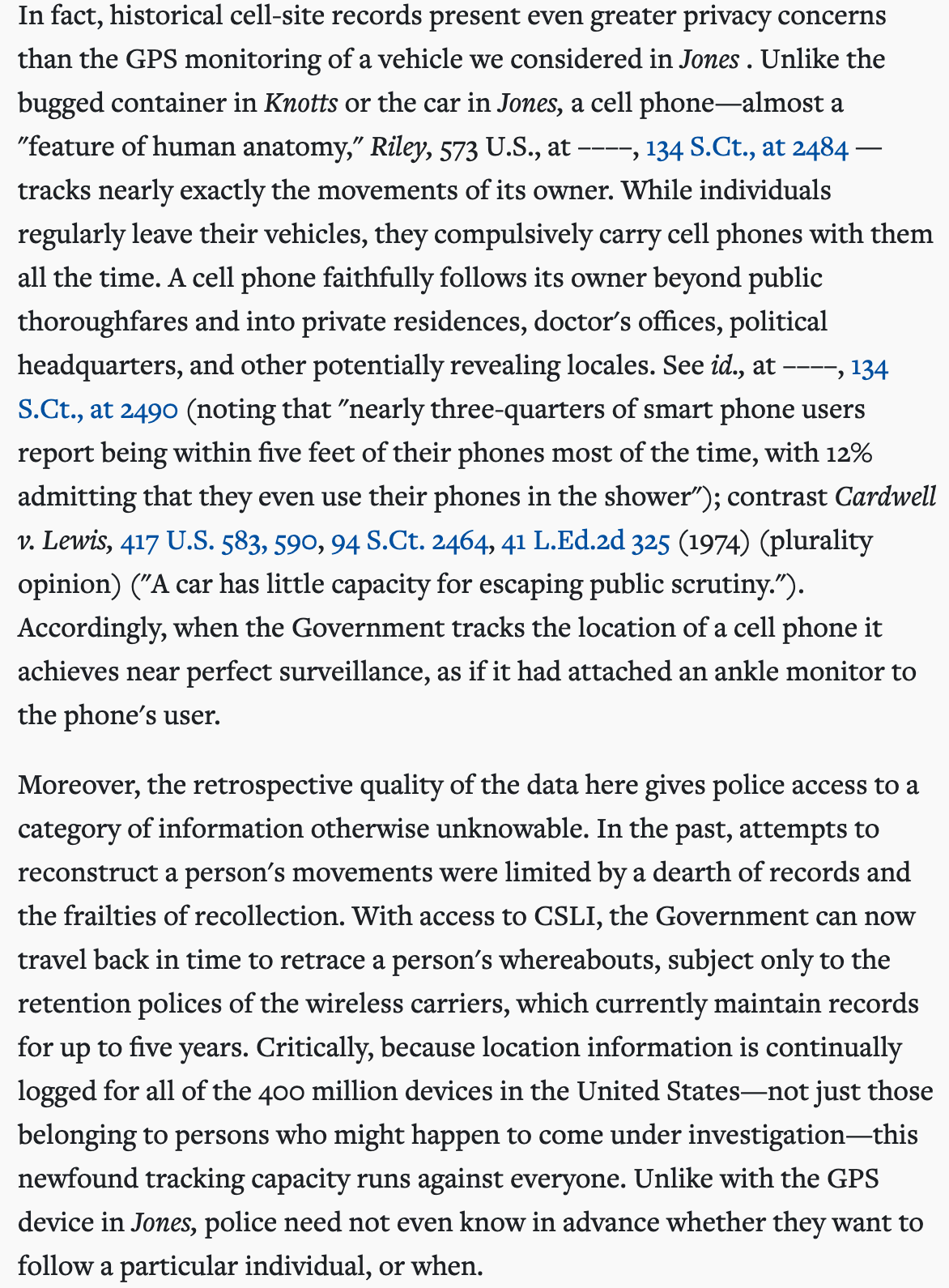 Justice Roberts/2018 Opinion/Carpenter v. United States
Justice Roberts/2018 Opinion/Carpenter v. United States
Much of the premise of the AP story is built around proof that cellphone data is not as precise as Justice Roberts describes in his opinion. Notably, Engelbrecht mentions in the movie that their data in Georgia was used by law enforcement as a test case to help law enforcement solve a cold murder case of a young girl.
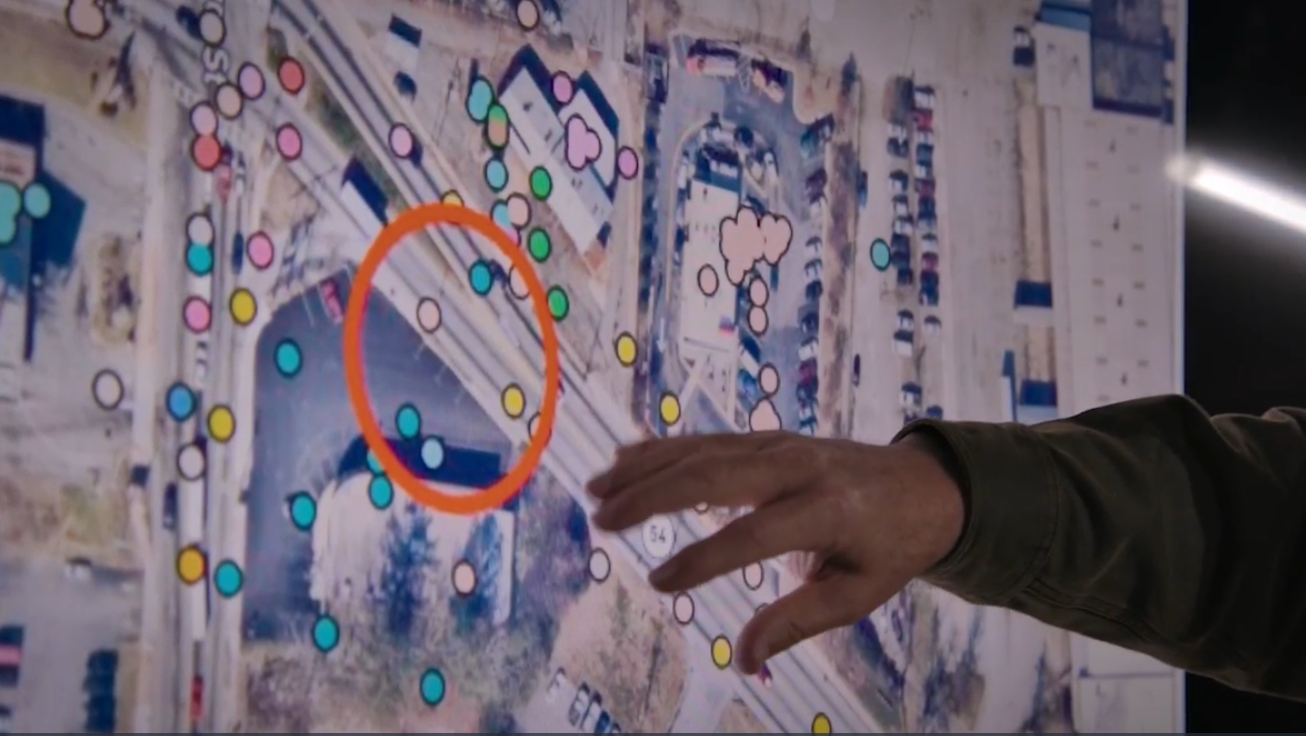 Atlanta Crime/2000 Mules/Test Case
Atlanta Crime/2000 Mules/Test Case
Methodology of the TTV/OPSEC Investigation
Ballot trafficking is defined as the paid collection and casting or delivery of a ballot by an unauthorized third party. In the 2020 election, multiple ballots were cast to dropboxes by many "mules" in numerous states and jurisdictions. It is illegal in all states to be paid for casting a ballot. Individuals or mules were paid $10 or more per ballot—according to witness interviews—to "pick up ballots from stash houses run by NGOs to run them to dropboxes." Engelbrecht states in the documentary, "So you have the collectors, on the one hand, you have the stash houses, which are the nonprofits, and then you have the mules that are doing the drops."
The criteria used to qualify as a ballot trafficker were purposely conceived by TTV to rule out false positives. In other words, TTV/OPSEC sought to avoid capturing individuals in their geo tracing that were merely passing by or who did not approach the dropbox. The mules also had to satisfy particular standards to be qualified as bonafide mules.
According to Engelbrecht, they set out to allow the "data to tell the tale." Phillips explains in the movie, "We put together a plan to see where the data would take us. Our final decision was that the traffickers had to have been to a dropbox space and five or more visits to one of the one or more of these organizations." Engelbrecht adds, "Those were the outliers. It was such an aberrant pattern." Phillips introjects, "The fact of the matter is, these techniques are used every single day by law enforcement, intelligence community, [and] the Department of Defense."
As such, their approach was conservative, meant to catch the worst offenders, according to Phillips:
"We want to absolutely ensure that we don't have false positives, meaning including people that should not have been included. We're not in any way saying that this is all there is. We're just saying that based on our criteria that we identified, in Atlanta, 242 people who went to an average of 24 drop boxes in eight organizations during a two-week period."
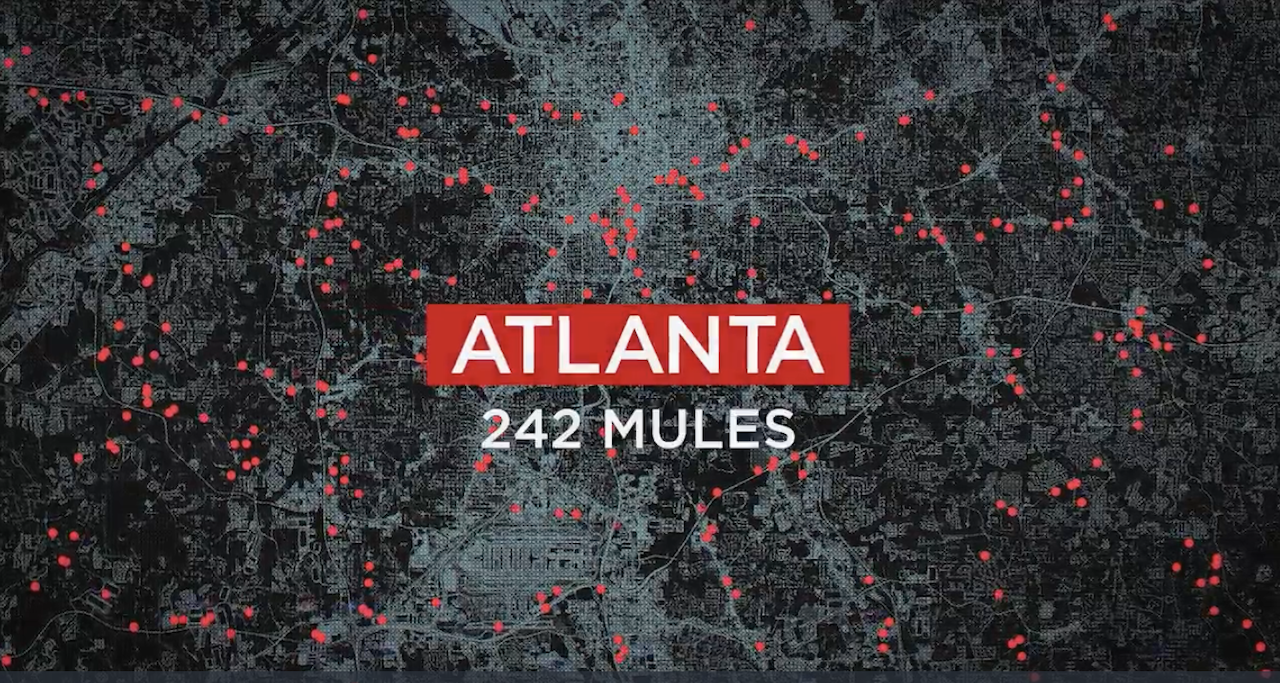 Atlanta Mules/2000 Mules
Atlanta Mules/2000 Mules
The team targeted swing states where the election was decided, Georgia, Wisconsin, Arizona, Pennsylvania, and Michigan. They collected data from October 1 through the election in all of the states, and in Georgia, the data was collected between October 1 and the January 6 runoff. In the Atlanta metro area, they targeted 309 dropboxes, some in suburban areas. They virtually fenced off (geofenced) the dropboxes to limit their collection of cellphone pings to those who entered the space and approached the dropbox. They also geofenced and pinged phones that approached or entered the identified "organizations (NGOs) across the country." They bought 10 trillion signals, more than a petabyte of data, during the course of the investigation.
When I asked Engelbrecht about the claims in the AP story that innocent people may have been caught up in their data, she said their methodology addressed those pitfalls:
"Of course, there are ways to eliminate passers-by and county workers, of course, there are ways to confirm that the people in the videos are (or are not) mules. Larry Campbell, dropping off 6 ballots for his big family, wouldn’t be in our study. Going once to a dropbox wasn’t in our study. Our mules averaged 38 dropbox visits and 8 NGO visits. Any other combination (ex. going to NGOs and USPS boxes, for example, wouldn’t have been in our study. Or going to 100 dropboxes, but no NGOs. They weren’t in our study.) That’s how we know this is the tip of the iceberg."
In the pattern of life below, the blue tracks are the pattern of travel by the individual in the course of one day. The orange dots are the dropboxes, and the house icons are the NGOs.
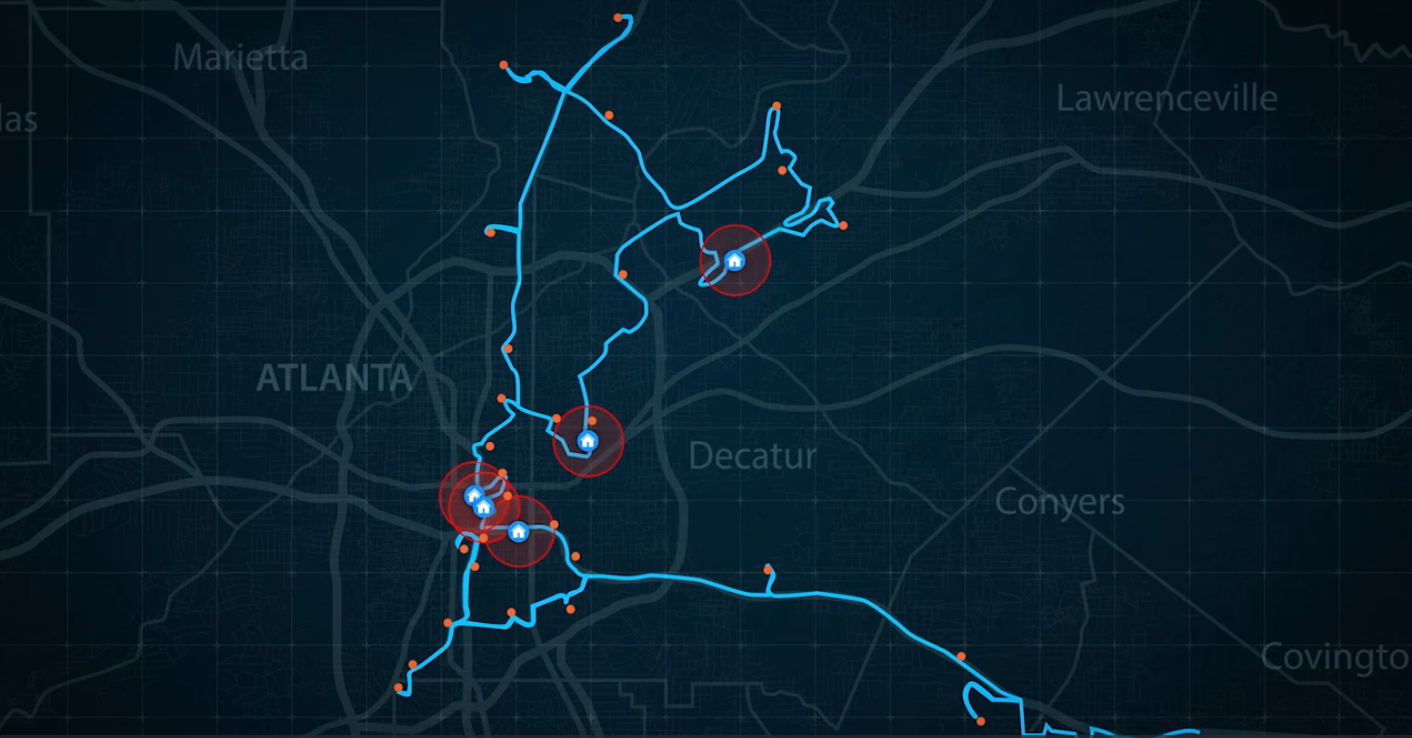 A Day In The Life Of a Mule/2000 Mules/Georgia
A Day In The Life Of a Mule/2000 Mules/Georgia
Phillips and Engelbrecht explain using the graphic above. Engelbrecht describes the things they looked for:
"Higher dropbox visits and the elements that are additive. Here the going to the nonprofits, the ability to identify the pattern of approach to a dropbox and that it is going not past a dropbox and on but directly to a dropbox and back to another point and then to another dropbox."
Phillips:
"What you see here on the screen is a single person on a single day in Atlanta, GA. They went to 28 drop boxes and five organizations in one day. The individual, to get to some of these dropboxes, you had to be intentional— to get off the highway, to get to the dropbox, you had to go on surface streets, you have to turn in somewhere in order to get to those drop boxes. The circles represent where the ballots originate, the stash houses where the ballots are collected and handed to the mules."
Concerning AP's recounting of Pennsylvania Sen. Sharif Street's claims that he was "confident he was counted as several of the 1,155 anonymous "mules', even though he didn't deposit anything into a dropbox at that time period," Engelbrecht's response was as follows:
"We have been very precise in what we’ve said. The writer makes claims and then debunks those claims with what we’ve actually said (in our testimony). If the Senator was going back and forth between NGOs and dropboxes, and if he did more than 10 times, then it is possible he would be in our study. Removing him still leaves 1100+ mules. Oh, and, very important, driving by dropbox isn’t a thing. You have to get out of your car and walk up to it. That’s what we looked at in the study."
Riots and Traffickers: Data Doesn't Lie
Additionally, OPSEC collected evidence suggesting some of the mules also participated in the violent Antifa riots earlier in the year. As D'Souza introjected, the likelihood of left-leaning participation in both is a much more likely hypothesis. Phillips states:
"There were several different violent BLM Antifa riots in Atlanta, and in one of them, we had three dozen of our mules participate in these violent riots. There's an organization that tracks the device IDs. Across all violent protests around the world, we took a look at our 242 mules in Atlanta, and sure enough, dozens and dozens and dozens of our mules show up on the ACLED databases."
The AP story attempts to convince readers the theory of there being an intersection between mules and BLM rioters falls flat unless you believe the data collected by the Armed Conflict Location & Event Data Project (ACLED) is bogus. You would also have to believe the same geofencing technology used by the CIA, the FBI, or the Department of Defense is also flawed and imprecise. If that isn't enough to convince, just read the 2019 NYTimes story on cellphone geolocation tracking. Moreover, the data combined with a robust law enforcement investigation with witness interviews would help to further substantiate TTV's findings.
Raffensperger Does Not Have TTV Video
The AP story contends Georgia Secretary of State Raffensperger's office investigated one of the surveillance videos circulated by True the Vote saying it found the man was dropping off ballots for himself and his family. Engelbrecht told UncoverDC while TTV has offered the video surveillance copies to the SOS, Raffensperger does not have TTV footage:
"They only have geospatial data. The GBI already has access to all the video because it’s a state video. We went through everything and offered to provide video, but until the subpoenas, they’ve never indicated what or how they wanted to receive info, and we didn’t want to do anything incorrectly. That’s how I am certain the comment about the Raffensperger having our video is inaccurate."
UncoverDC reached out to Raffensperger's office on Thursday about the video footage claim but has received no response as of this publication.
TTV has 4 million minutes of surveillance video from around the country from open records requests. According to Phillips, some of the video surveillance was turned off in Arizona. In Wisconsin—despite rules requiring video surveillance—surveillance of dropboxes was not done there. Importantly, in the places where TTV has video, they have the geolocation data that correlates with the video surveillance footage, further corroborating the evidence.
Gloves and Photos at Dropboxes
One of the AP claims is that wearing gloves to avoid fingerprints is "pure speculation." The ballot trafficking case in Arizona did, in fact, involve fingerprint evidence from the ballots. The evidence is most likely under seal. Nevertheless, whether the hypothesis about the connection between the case and the sudden wearing of gloves elsewhere is true or not, it is still unlikely that a universe of innocent people would be wearing surgical gloves or taking photos at dropboxes when delivering multiple ballots at 3 in the morning. It just isn't normal behavior.
Signature Verification Standards and Voter Rolls
The AP maintains all is well with absentee ballots concerning signature verification. Voter rolls in the U.S. are notoriously poorly maintained and updated. Engelbrecht and Phillips discuss poorly maintained voter rolls at length in their testimony in front of Wisconsin legislators. It is very tough to conduct clean elections when your voter rolls are populated with dead voters and out-of-state votes. Multiple states experienced issues with IDs and signature verification. For example, there were known issues in Wisconsin, Arizona, and Georgia with signature verification. According to Engelbrecht, "Inaccurate voter rolls are the gateway. In GA, 75k+ (in Nov) and 46k+ (in Jan) votes came from ineligible records, primarily voters who were no longer living in [the] state, but still found a way to cast a ballot." The claim that absentee and mail-in ballots are "verified by the signature and tracked closely" and "safeguards against anyone who tries to illegally cast extra ballots" is provably absurd.
AP Claims No Massive Ballot Collection Scheme
During the documentary, Engelbrecht describes an operation that delivers the ballots in the method of a thousand small cuts. She explained the operation seems to have been designed to have many mules delivering small numbers of ballots to avoid surges in ballot drops. Only in one case does the chain of custody documents indicate a significant surge at a dropbox, and that was in Gwinnett County, where 1,962 ballots were cast with "comparatively few cell phone devices were proximate to the dropbox during the period of time" notated. In this way, massive numbers of ballots were allegedly delivered, evading detection over time.
The numbers are stunning when the minimum criteria of 10 drop boxes, with 5 visits and a handful of ballots delivered per visit, are considered. By that calculus, it is a potential 380,000 illegal votes. When those criteria are lowered to fewer dropboxes and visits, another 810,000 illegal votes. In Georgia, Arizona, and Pennsylvania, the mules allegedly cast more than enough illegal votes to overcome the margin of defeat for Trump.
 Potential Illegal Votes/2000Mules
Potential Illegal Votes/2000Mules
Either way, TTV did not set out to litigate or change the election results. The investigation was data-driven and conservatively designed to capture evidence that sought to eliminate bias and satisfy a stringent scientific inquiry standard.
D'Souza asks toward the end of the documentary whether Engelbrecht and Phillips believe their data proves crimes occurred. He also asks whether the 2020 election results may have changed as a result of the ballot trafficking scheme. Phillips responds:
"With the lower bar of five dropbox visits and just three illegal ballots per drop, we find election fraud on an astonishing scale in Wisconsin, 83,565 illegal votes were trafficked in Wisconsin, in Georgia 92,670. In Pennsylvania, 209,505. In Michigan, 226,590, and Arizona, 207,435. Using this calculus, Trump would have won all the key States and the final electoral vote 305 to 233."
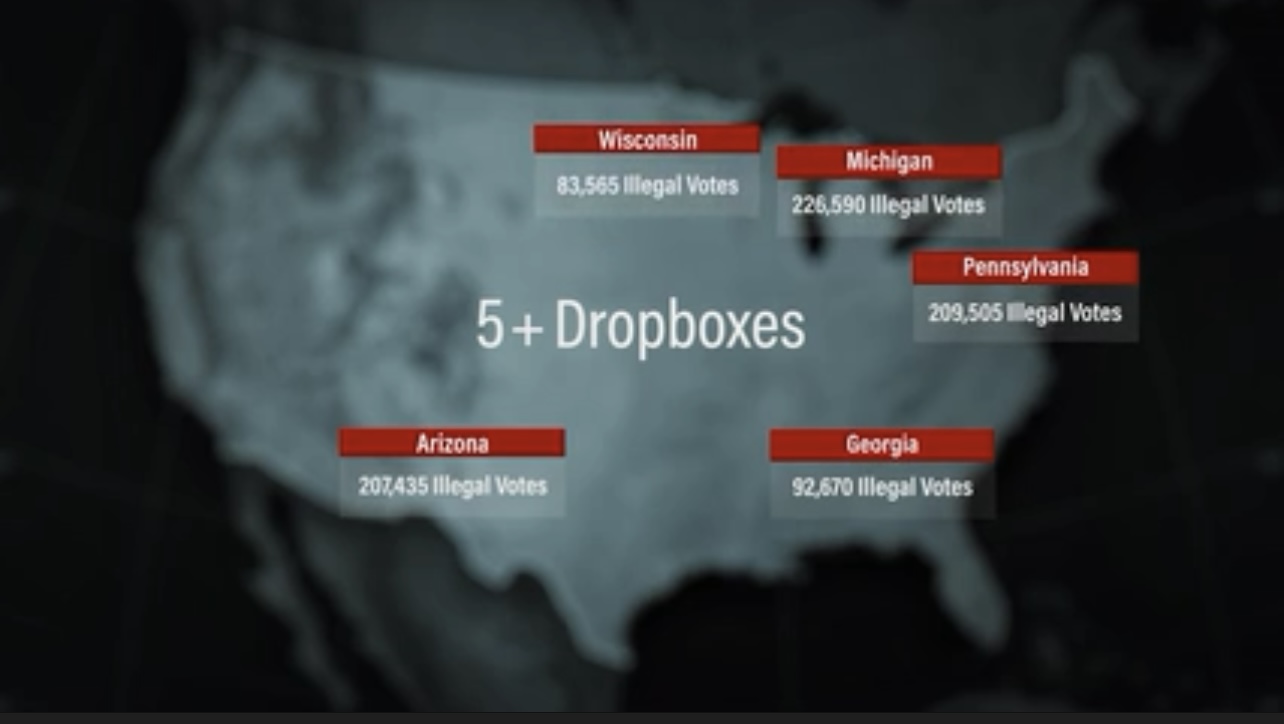 Phillips/final
Phillips/final
"And so these are the kind of things, 4,000,000 minutes of this, this was an organized effort to subvert a free and fair election," continued Phillips. "This is organized crime. You can't look at this data in its aggregate and believe anything otherwise. That's especially true when you consider that in places like Georgia, it was only decided by 10,012 thousand votes. And you look at 5,000 visits just from our mules. It's not a leap to say 'yes, this would have changed the results.'"
2000 Mules made its virtual debut on Saturday, May 7, with 80,000 people tuned in, according to D'Souza.


